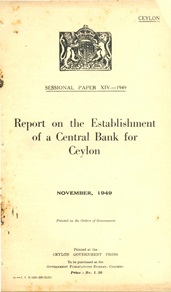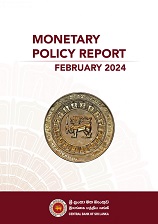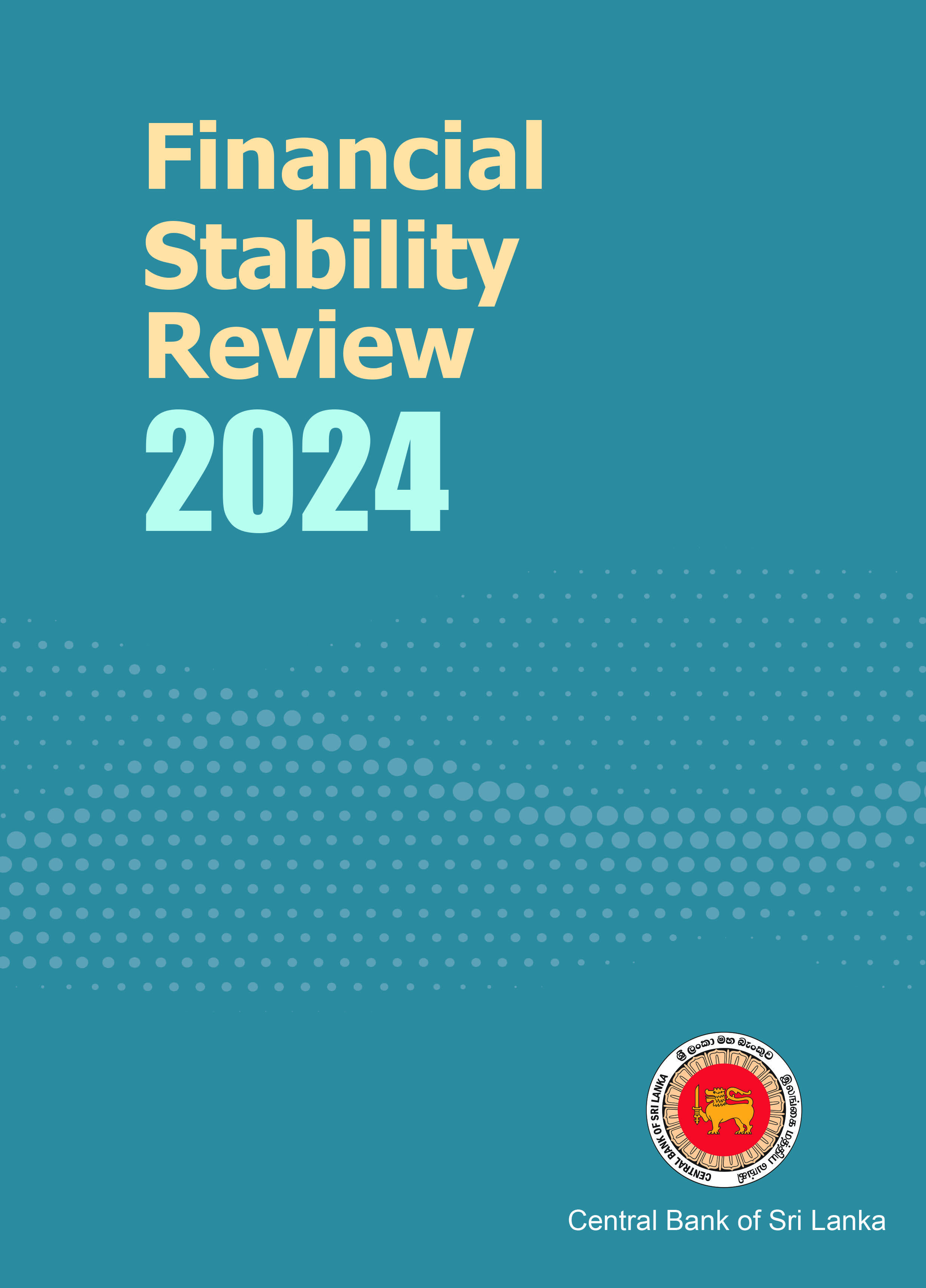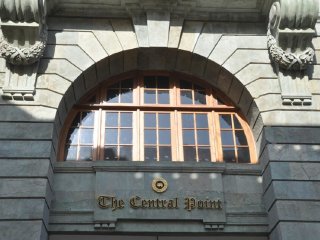Frequently Asked Questions (FAQs)
Market Operations
What is Monetary Policy Implementation?
Monetary policy implementation involves the use of various monetary policy tools to operationalise the monetary policy decisions made by the Monetary Policy Board of the Central Bank to achieve the key objective of the Central Bank, i.e., domestic price stability.
What are Open Market Operations?
Open Market Operations (OMOs) refer to the buying and selling of securities by the Central Bank under Section 31 of the Central Bank of Sri Lanka Act, No. 16 of 2023 (CBA), on temporary or outright basis, to inject or absorb liquidity to the money market. OMOs are the main market based monetary operations conducted by the Central Bank to manage the domestic money market liquidity in order to maintain the short term interest rates in consistent with the inflation target.
How do Open Market Operations work?
Open Market Operations (OMOs) are used to influence the Average Weighted Call Money Rate (AWCMR), which affects the movements of other short-term interest rates, as well as long-term interest rates in the economy. The resultant impact on other interest rates, such as deposit and lending rates, will in turn influence saving and spending decisions of the households and businesses and asset prices, and ultimately economic activity and price level in the economy.
Who is eligible to participate in Open Market Operations?
All Licensed Commercial Banks (LCBs) operating in Sri Lanka are eligible to participate in Open Market Operations (OMOs). The Standalone Primary Dealers (the companies appointed as Primary Dealers, other than LCBs) and the Employees’ Provident Fund (EPF) have limited access to facilities under OMOs. These institutions are commonly known as Participating Institutions (PIs).
What is Call Money Market?
Inter bank call money market is a market for Licensed Commercial Banks (LCBs) particularly to meet their overnight liquidity requirements by way of borrowing and lending among themselves without any collateral backing. These transactions are short-term in nature, and reflect the demand for liquidity (reserves) in the money market.
What is Average Weighted Call Money Rate?
Average Weighted Call Money Rate (AWCMR) is the weighted average interest rate of interbank call money transactions carried out on an overnight basis among the LCBs. AWCMR serves as the operating target of the monetary policy framework of the Central Bank and is computed and published by the Central Bank on each working day.
What is Repo Market?
Repo market is a short term market that helps Licensed Commercial Banks (LCBs), Standalone Primary Dealers (SPDs) and the Employee’s Provident Fund (EPF) to fulfill liquidity requirements through collateralised borrowings for their daily liquidity management purposes.
What is Average Weighted Repo Rate ?
Average Weighted Repo Rate (AWRR) is the weighted average interest rate of the overnight repo market transactions carried out on an overnight basis among PIs on a given day and is computed and published by the Central Bank on each working day.
What is Central Bank Liquidity and why is it important for Monetary Policy Implementation?
Central bank liquidity is defined as the sum of the reserve balances of commercial banks held with the central bank to fulfill their reserve requirement and settlement obligations. The actual balance in the reserve accounts held by commercial banks over the level required to be maintained in the reserve account determines the liquidity deficit or excess. The banking system is considered in excess (deficit) liquidity on a given day, if the deposit balances of a bank with the central bank are higher (lower) than the balance that they would need to maintain in the reserve/settlement account.
Based on excess or deficit liquidity, the central bank makes operational decisions to use appropriate tools to steer the overnight interest rate (for example, AWCMR) in Sri Lanka towards a desirable level, and the desired direction as per the prevailing monetary policy stance.
What are the liquidity enhancing and reducing factors?
Transactions by the PIs with the Central Bank cause the changes in the liquidity levels in the economy. Accordingly, in general, liquidity enhancing factors include;
a) Purchase of Treasury bills/ bonds from the secondary market by the Central Bank
i) on a temporary basis (Reverse repurchase transactions under OMOs)
ii) on an outright basis (Purchasing Treasury bills/bonds under OMOs)
b) Retirement of own securities issued by the Central Bank
c) Provision of the standing lending facility by the Central Bank
d) Purchase of foreign exchange from the domestic foreign exchange market by the Central Bank
e) Engage in foreign currency swap buy-sell transactions by the Central Bank
f) Purchase of foreign currency denominated loan receipts of the Government by the Central Bank
g) Deposit of currency at the Central Bank by Licensed Commercial Banks (LCBs)
h) Purchase of government securities from the primary market by the Central Bank*
i) Release of profits of the Central Bank to the Government**
j) Grant of provisional advances to the Government by the Central Bank***
k) Provision of loans and advances to PIs by the Central Bank
Liquidity reducing factors mainly include;
a) Sale of Treasury bills/bonds to the secondary market by the Central Bank on a temporary basis (Repurchase transactions under OMOs)
b) Sale of Treasury bills/bonds to the secondary market held by the Central Bank on an outright basis (Selling Treasury bills/bonds under OMOs)
c) Issuing of own securities by the Central Bank
d) Provision of the standing deposit facility by the Central Bank
e) Sale of foreign exchange in the domestic market by the Central Bank
f) Engage in foreign currency swap sell-buy transactions by the Central Bank
g) Sale of foreign exchange by the Central Bank to the Government for repayment of foreign currency denominated loans of the Government
h) Currency withdrawals by Licensed Commercial Banks (LCBs) from the Central Bank
i) Maturing/retiring of Treasury bills/ bonds held by the Central Bank
j) Repayment loans and advances obtained from the Central Bank by Participating Institutes
What is a Repo/Reverse Repo Auction?
Repo/Reverse Repo auctions are conducted by the Central Bank to absorb/inject liquidity from/to the domestic money market. A repo auction is conducted to absorb excess liquidity and a reverse repo auction is conducted to inject liquidity to the domestic money market. Under repo auctions, the Central Bank sells government securities (a repurchase) on a temporary basis with an agreement to reverse the transaction after an agreed number of days. Under reverse repo auctions, the Central Bank buys government securities (a reverse repurchase) on a temporary basis with an agreement to reverse the transaction after an agreed number of days. The tenor of the auction is determined based on the estimate and outlook of market liquidity (1 day - overnight repo/reverse repo; less than 7 days– short term repo/reverse repo; more than 7 days up to 90 days - long term repo/reverse repo).
What are outright auctions?
Outright auctions are conducted by the Central Bank to absorb or inject liquidity on a permanent basis to address long-term liquidity surplus/deficits. If the market liquidity remains at a large surplus and is likely to persist for a long period, the Central Bank decides to sell government securities on an outright basis in the secondary market from the holdings of government securities held by the Central Bank to absorb liquidity permanently from the money market. Similarly, through the purchase of government securities on an outright basis in the secondary market, the Central Bank injects liquidity permanently to the money market.
What are the types of Open Market Operations Auctions available for Participating Institutions?
The Central Bank conducts a variety of auctions under OMO depending on liquidity conditions.
| Auction | Objective | Eligible Counterparty | Tenor |
| Overnight Repo Auctions | Absorbing liquidity on an overnight basis | LCBs and EPF (EPF is only for Repo Auctions) | 1 Day |
| Overnight Reverse Repo Auctions | Injecting liquidity on an overnight basis | ||
| Overnight Liquidity Support Facility | Injecting liquidity on an overnight basis | Standalone Primary Dealers (SPDs) | 1 day |
| Short Term Repo Auctions | Absorbing liquidity on a short term basis | LCBs and EPF (EPF is only for Repo Auctions) | 2-7 days |
| Short Term Reverse Repo Auctions | Injecting liquidity on a short term basis | ||
| Short Term Liquidity Support Facility Auctions | Injecting liquidity on a short term basis | SPDs | 2-7 days |
| Long Term Repo Auctions | Absorbing liquidity on a long term basis | LCBs and EPF (EPF is only for Repo Auctions) | More than 7 days upto 90 days |
| Long Term Reverse Repo Auctions | Injecting liquidity on a long term basis | ||
| Long Term Liquidity Support Facility Auctions | Injecting liquidity on a long term basis | SPDs | More than 7 days upto 90 days |
| Outright Sales Auctions | Absorbing liquidity on a permanent basis | LCBs, SPDs and EPF | Not applicable |
| Outright Purchases Auctions | Injecting liquidity on a permanent basis |
What is the Liquidity Support Facility?
Liquidity Support Facility (LSF) is provided by the Central Bank to the Standalone Primary Dealers (SPDs) to resolve their liquidity needs with a view to ensuring smooth functioning of the domestic money market by eliminating undue pressures on the money market during times of liquidity shortage.
What is the Liquidity Assistance Facility?
In exceptional circumstances, the Central Bank provides liquidity assistance to the financial institutions for a period of 91 days as decided by the Governing Board as per Section 36 of the Central Bank of Sri Lanka Act, No. 16 of 2023 (CBA).
What is the Bank Rate?
The Bank Rate is the rate at which emergency loans are provided to banking institutions under Section 36 of the Central Bank of Sri Lanka Act, No. 16 of 2023 (CBA), No. 16 of 2023. At present, Bank Rate is decided by the Central Bank based on a benchmark rate plus a margin (eg. Average Weighted New Deposit Rate + 300 basis points).
What is the Statutory Reserve Ratio (SRR)?
The SRR determines the minimum amount of reserves that each Licensed Commercial Bank (LCBs) should hold, in the reserve account with the Central Bank, in proportion to the total rupee deposit liabilities of the respective bank, in terms of the provisions under Section 32 of the Central Bank of Sri Lanka Act, No. 16 of 2023 (CBA).
What types of deposits are considered for calculating the SRR?
All rupee-denominated deposits of Licensed Commercial Banks (LCBs), including demand deposits, time and savings deposits and other deposits denominated in rupee terms and any other deposit category as determined by the Monetary Policy Board of Central Bank from time to time are included in SRR.
What is the Intraday Liquidity Facility (ILF)?
The Central Bank provides interest-free Intra-day Liquidity Facility (ILF) against government securities as collateral to the Dealer Direct participants of the Real Time Gross Settlement (RTGS) system with a view to facilitate the smooth operations of the RTGS System.
What are Provisional Advances to the Government?
In terms of the Section 127 of the Central Bank of Sri Lanka Act, No. 16 of 2023 (CBA), the Central Bank may provide direct provisional advances to the Government to finance expenditures within the first month of the financial year. Such advance shall be repayable within a period not exceeding six months and the total amount of such advances outstanding shall not exceed ten per centum of the revenue of the first four months of the preceding financial year as reported in the half yearly report published by the Ministry of the Minister under the Fiscal Management (Responsibility) Act, No. 3 of 2003 for the relevant period. Provisional advances bear interest at prevailing market-related rates.
What is the role of the Central Bank as the Banker of the Government?
Under Sections 07 and 81 of the Central Bank of Sri Lanka Act, No. 16 of 2023 (CBA), the Central Bank maintains accounts of and provides banking facilities to the Government departments, institutions and certain statutory boards as the banker to the Government.
What is the role of the Central Bank as the Banker to the Banker?
Under Section 29 of the Central Bank of Sri Lanka Act, No. 16 of 2023 (CBA), as the banker to banker, the Central Bank provides current account facilities to facilitate payment and settlement systems to Licenced Banks. With respect to settlement facilities provided to such banks, the Central Bank makes settlements among the commercial banks in relation to the key payment and settlement systems, i.e., Cheque Imaging and Truncation System (CITS), Sri Lanka Inter-bank Payment System (SLIPS), Common ATM Switch (CAS) and the Common Electronic Fund Transfer Switch (CEFTS), via the Real Time Gross Settlement (RTGS) System.
Who is an Authorised Money Broker (AMB)?
Authorised Money Brokers (AMBs) are financial institutions who act as market intermediaries in money, foreign exchange, and government securities market that facilitates transactions between Participating Institutions. They act as agents without being counterparties to a transaction, but negotiate, arrange, or facilitate agreements between trading counterparts for a brokerage fee. Hence, AMBs assist the price discovery process in the money market and the Central Bank regulates them to ensure their professional conduct. At present, there are nine (9) money broking companies operating in Sri Lanka.
* In terms of Section 128 of the Central Bank of Sri Lanka Act, No. 16 of 2023 (CBA), the Central Bank may purchase securities issued by the Government in the primary market, bearing interest at prevailing market-related rates, during the past of eighteen months from the date on which the CBA become effective.
** In terms of Section 96 of the Central Bank of Sri Lanka Act, No. 16 of 2023 (CBA), before the expiration of 60 days after the end of each financial year, any remaining distributable earnings after compliance with the preceding provisions, the Central Bank needs to allocate distributable earnings to the government.
*** For more information, refer to question No.20.










